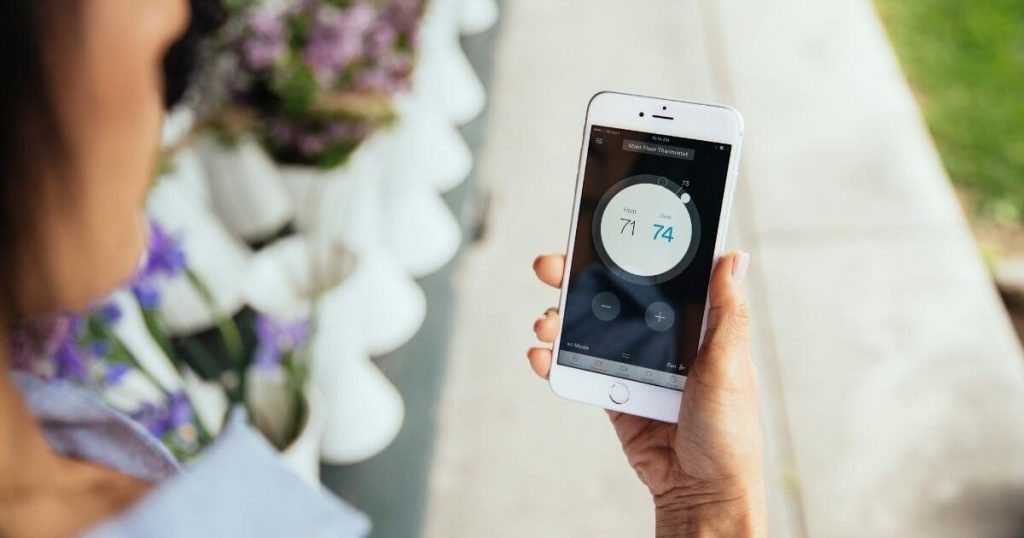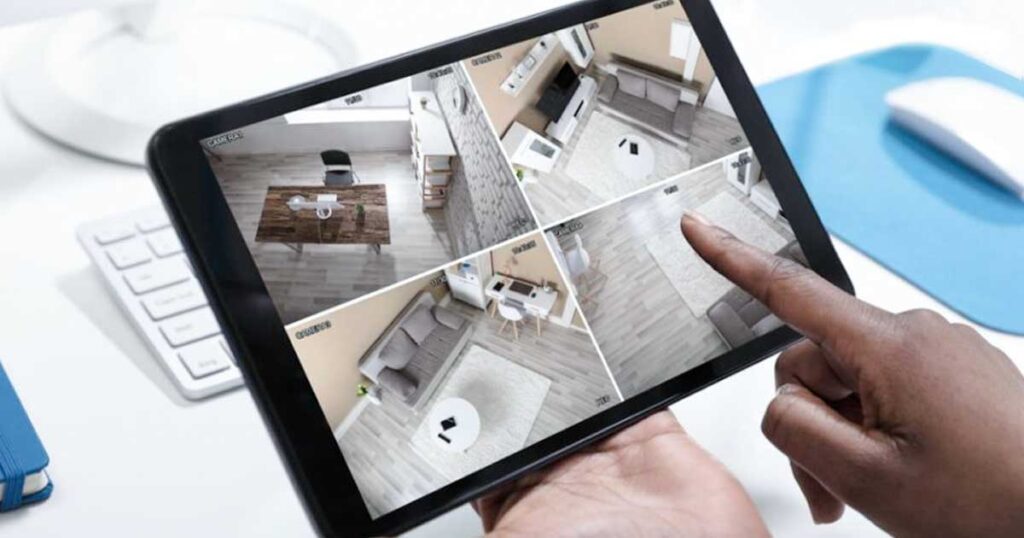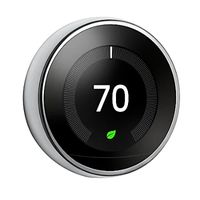There are many ways to make your home more energy efficient. From replacing old appliances to utilizing home automation technology, the options for lowering your utility bills are all-but-endless.
How Can I Make My Home Energy Efficient?
For over 11 years, SafeWise experts have conducted independent research and testing to write unbiased, human reviews (not robots). Learn more.
By signing up, you agree to our Terms and Conditions and Privacy Policy.
Focus on central heating and cooling
For homes with central heat and air, up to 42 percent of energy costs go toward maintaining a comfortable temperature.
- Lowering the cost of air conditioning and heating can be as simple as adding drapes or curtains and keeping them closed when the sun's beating down.
- Using a ceiling fan requires less energy than air conditioning and can let you adjust your thermostat without making you feel any hotter. In winter, use space heaters to add extra comfort to the room you're in.
- ENERGY STAR windows can lower your energy bills by 12 percent, and you may even be eligible for an income tax credit if you add them to your home. If you can’t afford new windows, seal any gaps around windows and doors.
- Think long-term and plant shade trees to cool your home. They'll work best on the south side of your home. It may take a while for them to grow large enough to make a big difference, but future generations will thank you.
- Make sure your attic is properly vented, especially if it doubles as a living space and gets conditioned air in the summer. Without proper air flow to the outside, it can get really hot up there, and your air conditioner will struggle to keep up with the demand.

Insulate
Adding insulation to your home can reduce heating and air conditioning expenses by up to 20 percent.
- Installing insulation in your attic or crawlspace or around heating and cooling ducts is relatively simple. If you do it yourself, buy appropriate protective gear: fiberglass insulation is a major skin and lung irritant.
- Other kinds of insulation, including blown-in or sprayed foam, are best left to the professionals. Before you pay for the help, determine where your home needs insulation, and what kind is best for those applications.
- If you live in an older home, your window casings may be covering old weight pockets. If your current windows don't use the weight and pulley system, remove the casings and add insulation.
- Don’t forget to insulate your hot water heater: a DIY installation is easy and inexpensive and could pay for itself in less than a year.
Keep it clean
Your HVAC system is vulnerable to dirt and debris, which can clog the motor and make it work harder. Here are some tips for keeping it clean.
- Change your HVAC air filter every 3 months—or more often if you have pets or allergies. (Alexa helps us remember.)
- Running an air purifier can cut down on some of the dust that makes it to your HVAC system, but it isn't a replacement for a proper duct filter.
- Cut back plants that grow too close to your air conditioning unit.
- Hire an air duct cleaner every one to two years—especially if you have floor vents, pets, or if your indoor air quality tests aren't improving.
- Have your furnace and air conditioner professionally inspected before turning it on for the season to make sure the motors are in good shape.
Conserve water
The smart use of water resources, which use a considerable amount of energy to deliver and treat, can help lower your energy bill.
- Installing a WaterSense shower head could save up to $70 in combined water and electricity costs each year and is a simple DIY project.
- Low-flow faucets and toilets can save 13,000 gallons of water each year.
- It may seem like a simple problem, but don’t let your faucet drip. If you can fix simple leaks yourself, it’ll pay off: one drip per second can add up to $1 per month.
Let there be better light
More efficient lighting is one of the easiest ways to save money on your utility bills.
- Compact Fluorescent Lamp (CFL) bulbs use less electricity than traditional incandescent bulbs and can pay for themselves within nine months.
- Light-Emitting Diode (LED) light bulbs are more expensive than traditional bulbs but are 75-80 percent more efficient than incandescent lighting and can last 10 to 25 times as long.
Save with the STAR
Cars are much more efficient than they were 20 years ago, and appliances are no different.
- A new ENERGY STAR refrigerator could save you $300 in energy cost over its lifetime.
- An ENERGY STAR washing machine could save you $40 a year.
- The ENERGY STAR program includes appliances from coffee makers to computers, so look for the logo on all new appliances you buy.
Take control with home automation
From an energy-efficiency standpoint, installing a home automation system may be the most effective way to make your home more energy efficient.
- Smart thermostats allow you to adjust the temperature of your home based on the time of day, or by manual control, via an app on your smartphone. Some smart thermostats, like the Google-owned Nest Thermostat, learn and adapt to your preferences automatically.
- Appliance/lighting control allows you to set any light plugged into a smart outlet to turn off at a pre-scheduled time, or, depending on the model you choose, from your smartphone.
- You can also buy smart appliances like power-saving refrigerators or energy-tracking washing machines that allow you to save energy with a touch of a button.
Where should I start?
It’s easy to spend a lot of money trying to save money, so replace inefficient light bulbs and appliances as they burn out, rather than all at once. Performing a home energy efficiency audit, or hiring a professional to perform one, can help identify the biggest sources of energy waste in your home so you can respond in the most economical manner.
Compare the best home security systems
Info current as of post date. Offers and availability may vary by location and are subject to change.
*$0 due up-front with consumer financing.
†No-contract options available with outright equipment purchase.
‡Landline monitoring only. Some restrictions apply. (Full disclaimer)
**With $99 installation charge and new monitoring agreement. Early termination fee applies. See full disclaimer for full offer details, terms, and conditions.
Recent Articles





